Rebekah Knight
Effect of patient positioning on retrieval of cystoliths by percutaneous cystolithotomy in dogs.
Knight, Rebekah; Owen, Laura
Authors
Laura Owen
Abstract
Percutaneous cystolithotomy (PCCL) is a minimally-invasive technique for removal of cystoliths. There is currently no information regarding optimum patient positioning during PCCL. The objective of this study was to assess whether patient positioning affected ease of cystolith retrieval via PCCL. PCCL was performed to retrieve artificial “cystoliths” in three canine cadavers weighing between 15 and 35 kg, using a threaded cannula and a rigid 30◦ 2.7 mm cystoscope. “Cystolith” retrieval was performed by retrograde flushing and use of a flexible stone basket, with the dog in 10◦ Trendelenburg, 10◦ reverse Trendelenburg, or neutral position. The location of the “cystoliths”, number retrieved during flushing, and total time for retrieval were recorded and compared between different positions. The mean total time for “cystolith” retrieval was 392 ± 131 s, with 162 ± 20 s for flushing and 221 ± 123 s for basket-retrieval. The mean number of “cystoliths” retrieved during flushing was 3 ± 2. No significant differences were detected when comparing retrieval times between different positions. The predominant location of the “cystoliths” within the bladder varied depending on the position of the dog. In neutral, 93 % were located adjacent to the ureteric openings, whereas in 10◦ reverse Trendelenburg, 100 % were located by the urethral orifice. In 10◦ Trendelenburg, 60 % “cystoliths” were located at the tip of the cannula. Cystolith retrieval during PCCL can be performed in either neutral, Trendelenburg or reverse Trendelenburg position. Changing the dog’s position may be useful in cases where cystolith retrieval is challenging, to move the cystoliths and enable different techniques to be employed using the stone basket.
Citation
Knight, R., & Owen, L. (2024). Effect of patient positioning on retrieval of cystoliths by percutaneous cystolithotomy in dogs. The Veterinary Journal, 309, Article 106291. https://doi.org/10.1016/j.tvjl.2024.106291
| Journal Article Type | Article |
|---|---|
| Acceptance Date | Dec 14, 2024 |
| Online Publication Date | Dec 16, 2024 |
| Publication Date | Dec 16, 2024 |
| Deposit Date | Dec 17, 2024 |
| Publicly Available Date | Dec 19, 2024 |
| Journal | The Veterinary Journal |
| Print ISSN | 1090-0233 |
| Publisher | Elsevier |
| Peer Reviewed | Peer Reviewed |
| Volume | 309 |
| Article Number | 106291 |
| DOI | https://doi.org/10.1016/j.tvjl.2024.106291 |
Files
Effect of patient positioning on retrieval of cystoliths by percutaneous cystolithotomy in dogs
(3.8 Mb)
PDF
Licence
http://creativecommons.org/licenses/by/4.0/
Publisher Licence URL
http://creativecommons.org/licenses/by/4.0/
Version
VoR
You might also like
Hemoperitoneum Secondary to Liver Lobe Torsion in a Cat
(2020)
Journal Article
Feline head trauma: a CT analysis of skull fractures and their management in 75 cats
(2018)
Journal Article
Variations in surgical technique for adrenalectomy with caudal vena cava venotomy in 19 dogs
(2019)
Journal Article
Downloadable Citations
About RVC Repository
Administrator e-mail: publicationsrepos@rvc.ac.uk
This application uses the following open-source libraries:
SheetJS Community Edition
Apache License Version 2.0 (http://www.apache.org/licenses/)
PDF.js
Apache License Version 2.0 (http://www.apache.org/licenses/)
Font Awesome
SIL OFL 1.1 (http://scripts.sil.org/OFL)
MIT License (http://opensource.org/licenses/mit-license.html)
CC BY 3.0 ( http://creativecommons.org/licenses/by/3.0/)
Powered by Worktribe © 2025
Advanced Search
